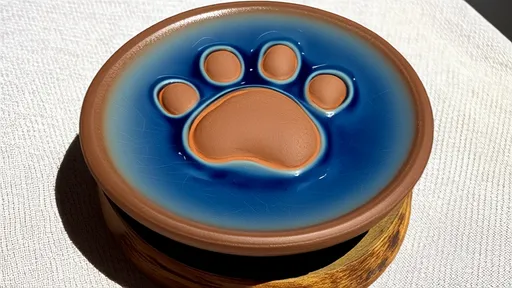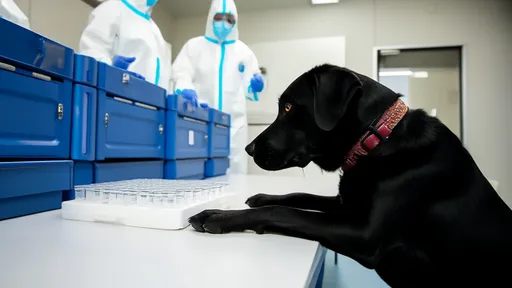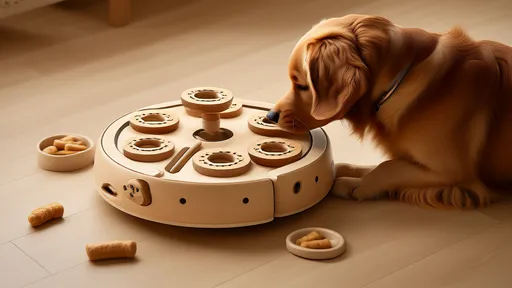As veterinary medicine advances, the focus on quality of life and compassionate end-of-life care for pets has grown significantly. One crucial aspect of palliative and hospice care for animals is effective pain assessment. Unlike humans, our furry companions cannot verbally communicate their discomfort, making standardized pain evaluation tools indispensable in clinical practice.
The concept of pet hospice care, often referred to as palliative or comfort care, emphasizes maintaining dignity and minimizing suffering during an animal's final life stages. Pain management stands as the cornerstone of this approach. Veterinary professionals now recognize that untreated pain not only causes unnecessary suffering but can also accelerate disease progression and compromise the immune system. This understanding has led to the development and refinement of specialized pain assessment scales tailored for different animal species.
Understanding pain scales in veterinary practice requires appreciating how animals express discomfort differently than humans. Dogs might show pain through subtle behavioral changes like decreased interaction, altered posture, or excessive licking of a specific area. Cats often become more reclusive or exhibit changes in grooming patterns. These species-specific behaviors necessitated the creation of dedicated assessment tools that account for such variations in pain expression.
The evolution of veterinary pain scales has been remarkable over the past two decades. Early attempts simply adapted human pain scales, but these proved inadequate due to fundamental differences in pain expression between species. Modern veterinary pain assessment tools now incorporate species-specific behaviors, physiological parameters, and functional assessments. Some scales focus on acute pain, while others better suit chronic conditions commonly seen in hospice cases.
Implementing pain assessment protocols in daily practice requires staff training and consistency. The most effective veterinary clinics establish standardized procedures where trained technicians perform regular pain assessments using validated scales. These evaluations become part of the medical record, allowing for objective tracking of pain control effectiveness over time. Such documentation proves particularly valuable in hospice cases where pain management needs frequently change as diseases progress.
Several validated pain scales have gained widespread acceptance in veterinary hospice care. The Canine Brief Pain Inventory, originally developed for arthritis pain, has shown excellent utility for chronic conditions common in elderly dogs. Feline patients benefit from the UNESP-Botucatu multidimensional scale, which evaluates both behavioral and physiological parameters. For acute pain scenarios, the Glasgow Composite Measure Pain Scale provides detailed guidance for postoperative or injury-related pain assessment.
Interpreting pain scale results demands clinical experience and knowledge of individual patient baselines. A score that might indicate mild discomfort in one animal could represent severe pain in another due to differences in pain tolerance and expression. Experienced veterinarians learn to combine scale results with hands-on examination findings and owner observations to make comprehensive pain management decisions. This holistic approach proves especially important in hospice cases where quality of life decisions hang in the balance.
Training veterinary teams in proper pain scale use involves more than simply memorizing criteria. Effective training programs include video assessments of patient behaviors, case discussions, and regular calibration sessions where staff compare evaluations to maintain consistency. Many veterinary teaching hospitals now incorporate pain assessment certification programs to ensure graduates enter practice with these essential skills. Continuing education courses frequently update practitioners on scale refinements and new assessment methodologies.
The emotional aspect of pain assessment in end-of-life care cannot be overstated. Veterinary professionals often find themselves navigating difficult conversations with pet owners about pain recognition and management options. Clear communication about what pain scales measure and how they guide treatment decisions helps owners feel more confident in care choices. Some practices provide owners with simplified versions of pain scales to use at home, fostering collaboration in monitoring their pet's comfort.
Technological advancements are beginning to influence pain assessment methodologies. Some specialty practices now incorporate video analysis software to detect subtle behavioral changes indicative of pain. Wearable devices that monitor activity levels, rest patterns, and physiological parameters provide additional objective data to complement traditional pain scales. While these technologies show promise, they currently serve as supplements rather than replacements for validated pain assessment tools.
Pain scale selection should consider the patient's specific condition and life stage. Geriatric patients with multiple chronic conditions often require different assessment approaches than younger animals with acute injuries. Hospice cases frequently benefit from quality-of-life scales that incorporate pain assessment alongside other factors like appetite, mobility, and engagement. The most sophisticated practices maintain expertise in multiple scales to match the optimal tool to each patient's unique situation.
The future of veterinary pain assessment likely holds more personalized approaches. Researchers are investigating biomarkers that might objectively indicate pain levels, potentially leading to blood tests or other diagnostic tools to complement behavioral assessments. Genetic studies may eventually reveal why some animals tolerate or express pain differently than others. Such advances could revolutionize how we evaluate and manage pain in our animal companions during their most vulnerable life stages.
Implementing thorough pain assessment protocols ultimately serves the greater goal of preserving dignity and comfort for pets in their final days. When veterinary teams commit to regular, standardized pain evaluations using validated scales, they can make more informed decisions about medication adjustments, supportive care, and timely euthanasia. This systematic approach to discomfort management represents one of the most significant advances in modern veterinary hospice care, ensuring our beloved pets experience the most peaceful transition possible.

By /Jul 7, 2025

By /Jul 7, 2025

By /Jul 7, 2025

By /Jul 7, 2025

By /Jul 7, 2025

By /Jul 7, 2025

By /Jul 7, 2025

By /Jul 7, 2025

By /Jul 7, 2025

By /Jul 7, 2025

By /Jul 7, 2025

By /Jul 7, 2025

By /Jul 7, 2025

By /Jul 7, 2025

By /Jul 7, 2025

By /Jul 7, 2025

By /Jul 7, 2025

By /Jul 7, 2025